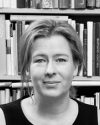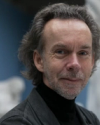
The Provanance of a Kunsthalle
This exhibition explores the material provenance of Kunstnernes hus through investigations of building materials, technical infrastructure, lighting, maintenance systems, exhibition armature and more. Through archival studies and on-site surveys, 15 students from The Oslo School of Architecture and Design have excavated the production history, sourcing, economy, usage, ownership history, and alteration records of the building’s facades, spaces, structure, components, materials, and artworks. By constructing an alternative history, this exhibition challenges the way we understand and assess the building and might change the way we transform it for the future.
Kunstnernes hus was completed in 1930 as an artist-led foundation to show contemporary Norwegian and international art. Incredibly rich in its detailing and exquisite in its use of natural light, Kunstnernes hus is still viewed as one of the best exhibition spaces in all of Norway.
The exhibition is the result of a fall seminar housed within the building taught by Erik Langdalen and Nicholas Coates in close collaboration with Kunstnernes hus and in dialogue with Mari Lending, Åsmund Torkildsen, Marianne Heier, Dag Erik Elgin, Jonas Norsted, Espen Johnsen and others. The seminar is part of the research project Provenance Projected. Architecture Past and Future in the Era of Circularity and is the second in a series looking at the provenance of architecture through the lens of buildings for art.
Students:
Lorenz Andexer, Solveig Koløen Birkeland, Herman Bjerke, Gentiana Dobra, Sofie Holme, Teo Glorvigen Kalafat, Guro Kalstveit, Emanuel Victor Kjellberg. Silja Klæstad, Haakon Andresen Lindstad, Eirik Uhre Løvhaug, Emily Suong Ngoc Nguyen, Einar Runde Saxegaard, Marie Hag Simensen, Astrid Aune Tveita



